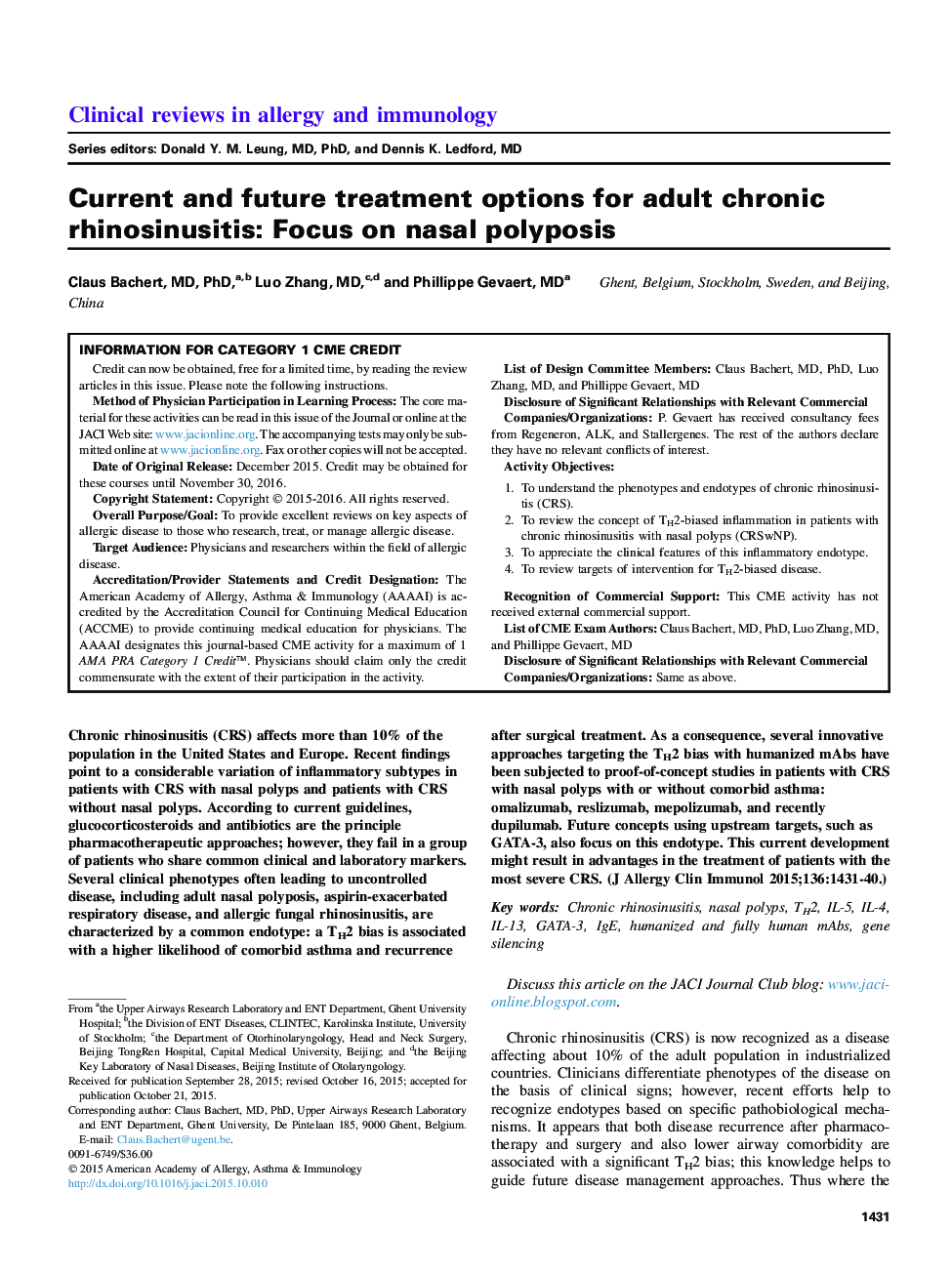| Article ID | Journal | Published Year | Pages | File Type |
|---|---|---|---|---|
| 6063137 | Journal of Allergy and Clinical Immunology | 2015 | 10 Pages |
Abstract
Chronic rhinosinusitis (CRS) affects more than 10% of the population in the United States and Europe. Recent findings point to a considerable variation of inflammatory subtypes in patients with CRS with nasal polyps and patients with CRS without nasal polyps. According to current guidelines, glucocorticosteroids and antibiotics are the principle pharmacotherapeutic approaches; however, they fail in a group of patients who share common clinical and laboratory markers. Several clinical phenotypes often leading to uncontrolled disease, including adult nasal polyposis, aspirin-exacerbated respiratory disease, and allergic fungal rhinosinusitis, are characterized by a common endotype: a TH2 bias is associated with a higher likelihood of comorbid asthma and recurrence after surgical treatment. As a consequence, several innovative approaches targeting the TH2 bias with humanized mAbs have been subjected to proof-of-concept studies in patients with CRS with nasal polyps with or without comorbid asthma: omalizumab, reslizumab, mepolizumab, and recently dupilumab. Future concepts using upstream targets, such as GATA-3, also focus on this endotype. This current development might result in advantages in the treatment of patients with the most severe CRS.
Keywords
IgEAFRSCRSsNPCRSwNPAERDIL-13Th2hmAbIL-5GCsESSCRSIL-4GATA-3Aspirin-exacerbated respiratory diseasecomputed tomographyEndoscopic sinus surgeryGene silencingChronic rhinosinusitis with nasal polypsAllergic fungal rhinosinusitisChronic rhinosinusitis without nasal polypsChronic rhinosinusitisNasal polypsGlucocorticosteroid
Related Topics
Life Sciences
Immunology and Microbiology
Immunology
Authors
Claus MD, PhD, Luo MD, Phillippe MD,
